Innovative Forest Management for Biodiversity Protection
- September 24, 2024
- 0 comment
Forests are vital ecosystems teeming with life and playing an indispensable role in sustaining our planet’s biodiversity. However, these ecosystems face mounting threats from human activity, climate change, and unsustainable management practices.

The need for innovative approaches to forest management is more critical than ever to protect the rich tapestry of life within these ecosystems. This article explores cutting-edge strategies for safeguarding biodiversity through effective forest management, from integrating Indigenous knowledge to leveraging advanced technologies.
Table of Content:
- Impact of Deforestation on Biodiversity
- Ecosystem-Based Management (EBM)
- Adaptive Management Strategies
- Integrating Indigenous Knowledge
- Agroforestry Systems
- Restoration Ecology and Reforestation
- Use of Technology in Forest Management
- Community-Based Forest Management
- Protected Areas and Reserves
- Forest Certification and Sustainable Practices
- Climate Change Mitigation and Adaptation
- Legal and Policy Frameworks
- Innovative Funding Mechanisms
- Public Awareness and Education
- Challenges in Implementing Innovative Approaches
- Future Trends in Forest Management
- Case Studies of Successful Forest Management
The Importance of Biodiversity in Forest Management
Traditional forest management practices have often prioritized resource extraction and economic gain, sometimes at the expense of ecological balance and biodiversity. As pressures on forest ecosystems intensify due to factors like deforestation, habitat fragmentation, and climate change, the limitations of these conventional methods become increasingly apparent. There is a growing recognition of the need for innovative forest management strategies that prioritize biodiversity protection while also considering social and economic factors.
Emerging threats to biodiversity include the rapid loss of species, degradation of habitats, and disruption of ecological processes. Addressing these challenges requires a shift from traditional forest management approaches to more holistic and adaptive strategies that prioritize ecosystem health and resilience. Innovative forest management practices aim to create a harmonious balance between human needs and ecological integrity, ensuring the preservation of biodiversity for future generations.
Understanding Biodiversity in Forest Ecosystems
Biodiversity refers to the variety of life forms within a given ecosystem, including the diversity of species, genetic variability, and the complexity of ecological interactions. In forest ecosystems, biodiversity encompasses a wide range of organisms, from towering trees and understory plants to countless animal species, fungi, and microorganisms.
Forest biodiversity plays a crucial role in maintaining ecosystem health and resilience. Diverse ecosystems are more adaptable to environmental changes and disturbances, providing essential services such as carbon sequestration, water regulation, and soil fertility. Furthermore, forests support countless species, many of which are found nowhere else on Earth, making them critical for global biodiversity conservation.
To effectively protect biodiversity in forest ecosystems, it is essential to understand the intricate relationships between different species and the ecological processes that sustain them. This knowledge forms the foundation for developing innovative forest management approaches that prioritize biodiversity protection and ecosystem health.
1. Impact of Deforestation on Biodiversity
Deforestation, the widespread clearing of forests for agriculture, logging, and urban development, poses a significant threat to biodiversity. It is estimated that millions of hectares of forests are lost each year, leading to habitat destruction, species displacement, and ecosystem degradation.

The consequences of deforestation for biodiversity are profound. As forests are cleared, species lose their habitats, leading to population declines and increased extinction risks. Additionally, deforestation disrupts ecological processes, such as nutrient cycling and pollination, which are vital for maintaining ecosystem health.
Deforestation also contributes to climate change by releasing stored carbon into the atmosphere, exacerbating global warming and further threatening biodiversity. The loss of forests accelerates the loss of species and undermines the resilience of ecosystems, making it essential to address deforestation through innovative forest management strategies.
2. Ecosystem-Based Management (EBM)
Ecosystem-Based Management (EBM) is an approach that recognizes the interconnectedness of ecological, social, and economic systems. It seeks to manage natural resources in a way that maintains ecosystem health and resilience while also considering human needs and values.
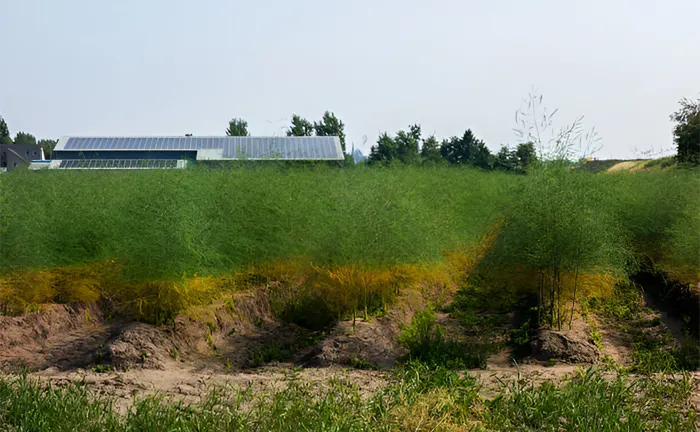
EBM principles emphasize the importance of understanding and managing ecosystems as whole systems rather than focusing on individual components. This approach encourages the consideration of ecological processes, species interactions, and the cumulative impacts of human activities.
By adopting EBM principles, forest managers can develop strategies that prioritize biodiversity protection and ecosystem health. EBM promotes adaptive management practices that can respond to changing conditions and emerging challenges, ensuring the long-term sustainability of forest ecosystems.
3. Adaptive Management Strategies
Adaptive management is a dynamic approach to forest management that emphasizes learning, flexibility, and continuous improvement. It involves implementing management actions as experiments and monitoring their outcomes to gain insights and refine strategies over time.
Adaptive management is particularly valuable in complex and changing environments where uncertainty is high. By embracing uncertainty and incorporating feedback loops, adaptive management allows forest managers to adjust their strategies in response to new information and changing conditions.
Examples of adaptive management practices in forest management include adjusting harvest schedules based on wildlife population trends, experimenting with different reforestation techniques, and monitoring ecosystem responses to management interventions. By adopting adaptive management, forest managers can enhance their ability to protect biodiversity while also addressing social and economic considerations.
4. Integrating Indigenous Knowledge
Indigenous communities have a deep understanding of forest ecosystems based on centuries of observation and interaction. Their traditional knowledge and practices offer valuable insights for sustainable forest management and biodiversity protection.

Integrating Indigenous knowledge into forest management practices can enhance the effectiveness and cultural relevance of conservation efforts. Indigenous communities often have a holistic understanding of ecosystems, emphasizing the importance of maintaining balance and harmony with nature.
Collaborating with Indigenous communities in forest management can lead to innovative approaches that combine traditional practices with modern scientific knowledge. This integration can result in more effective and culturally appropriate strategies for biodiversity protection and ecosystem health.
5. Agroforestry Systems
Agroforestry is a land-use management system that combines agriculture and forestry practices to create sustainable and productive landscapes. By integrating trees with crops and livestock, agroforestry systems offer numerous benefits for biodiversity and local communities.
Different types of agroforestry systems include alley cropping, silvopasture, and forest farming. These systems provide diverse habitats for wildlife, promote soil fertility, and enhance carbon sequestration.
Agroforestry systems also contribute to biodiversity conservation by creating habitat corridors and reducing the pressure on natural forests. By adopting agroforestry practices, farmers can enhance their livelihoods while contributing to biodiversity protection and ecosystem health.
6. Restoration Ecology and Reforestation
Restoration ecology focuses on restoring degraded ecosystems to their natural state, promoting biodiversity recovery and ecosystem health. Reforestation, the process of planting trees to restore deforested areas, is a key component of restoration ecology.

Restoration efforts aim to reestablish native vegetation, improve soil health, and enhance habitat connectivity. Successful restoration projects consider the ecological and social context, involving local communities and stakeholders in the process.
While restoration ecology offers significant potential for biodiversity recovery, it also presents challenges, such as ensuring species diversity and addressing the causes of degradation. Despite these challenges, restoration efforts have achieved remarkable successes in restoring ecosystems and supporting biodiversity.
7. Use of Technology in Forest Management
Technological advancements have revolutionized forest management, providing new tools and techniques for monitoring, planning, and conservation. Remote sensing, Geographic Information Systems (GIS), and drones are among the technologies transforming forest management practices.

Remote sensing and GIS enable the collection and analysis of spatial data, allowing forest managers to monitor changes in forest cover, assess biodiversity, and plan conservation interventions. These technologies provide valuable insights into forest ecosystems, facilitating informed decision-making.
Drones and automated monitoring systems offer real-time data collection and monitoring capabilities, enhancing the efficiency and accuracy of forest management practices. By leveraging technology, forest managers can develop innovative strategies for biodiversity protection and ecosystem health.
8. Community-Based Forest Management
Community-based forest management involves engaging local communities in the management and conservation of forest resources. By involving communities in decision-making processes and providing them with benefits, community-based approaches promote sustainable and equitable forest management.
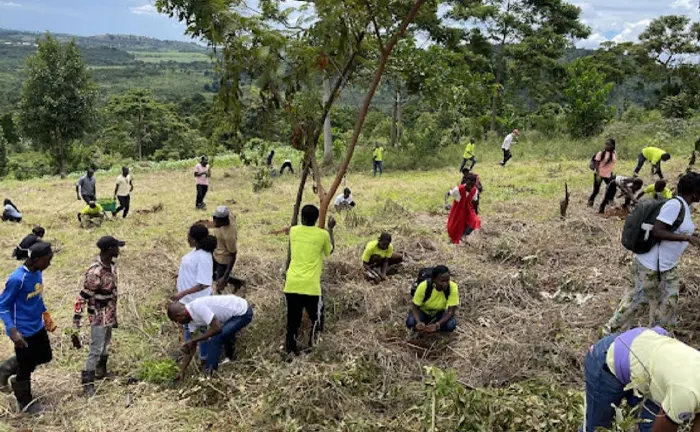
Successful community-based forest management initiatives empower local communities, enhance their livelihoods, and foster a sense of ownership and stewardship. These approaches recognize the importance of local knowledge, values, and aspirations in achieving biodiversity protection and sustainable development.
Community-based forest management has demonstrated its effectiveness in conserving biodiversity and improving social and economic outcomes. By building strong partnerships with local communities, forest managers can create innovative and inclusive strategies for biodiversity protection and ecosystem health.
9. Protected Areas and Reserves
Protected areas and reserves play a vital role in conserving biodiversity by providing safe havens for species and ecosystems. These areas are designated for the protection and preservation of natural resources, offering a refuge from human activities and threats.
Protected areas vary in size, management objectives, and governance structures, ranging from national parks to community-managed reserves. They contribute to biodiversity conservation by maintaining habitat connectivity, supporting species recovery, and protecting ecosystem services.
Despite their importance, protected areas face challenges, such as inadequate funding, limited capacity, and conflicting land-use pressures. Overcoming these challenges requires innovative management approaches that integrate conservation objectives with social and economic considerations.
10. Forest Certification and Sustainable Practices
Forest certification programs promote sustainable forest management by establishing standards and criteria for responsible practices. Certification programs, such as the Forest Stewardship Council (FSC) and the Programme for the Endorsement of Forest Certification (PEFC), provide third-party verification of forest management practices.
Certification programs ensure that forests are managed in a way that meets environmental, social, and economic criteria, contributing to biodiversity protection and sustainable development. Certified forests adhere to principles such as legal compliance, conservation of biodiversity, and respect for Indigenous rights.
By supporting certified forest products, consumers can contribute to sustainable forest management and biodiversity protection. Forest certification programs play a crucial role in promoting responsible practices and encouraging innovation in forest management.
11. Climate Change Mitigation and Adaptation
Forests are vital in mitigating climate change by acting as carbon sinks, sequestering atmospheric carbon dioxide and storing it in biomass and soil. Sustainable forest management practices can enhance forests’ capacity to mitigate climate change and support biodiversity protection.

Adaptation strategies are also essential for building climate-resilient forests that can withstand changing conditions and disturbances. These strategies include promoting species diversity, enhancing ecosystem connectivity, and restoring degraded landscapes.
By integrating climate change mitigation and adaptation into forest management practices, forest managers can contribute to global climate goals while safeguarding biodiversity and ecosystem health.
12. Legal and Policy Frameworks
Legal and policy frameworks provide the foundation for forest management and biodiversity protection at national and international levels. These frameworks establish regulations, guidelines, and incentives for sustainable forest management and conservation.
National policies address forest governance, land tenure, and resource management, while international agreements, such as the Convention on Biological Diversity (CBD) and the United Nations Framework Convention on Climate Change (UNFCCC), promote global cooperation and coordination.
Effective legal and policy frameworks are essential for creating an enabling environment for innovative forest management practices. By aligning policies with conservation objectives, governments can support biodiversity protection and sustainable development.
Innovative Funding Mechanisms
Innovative funding mechanisms are critical for supporting forest management and biodiversity protection efforts. These mechanisms provide financial resources and incentives for conservation initiatives, ensuring the sustainability and effectiveness of forest management practices.
Payment for ecosystem services (PES) programs offer financial compensation to landowners and communities for conserving and restoring ecosystems. Carbon credits and biodiversity offsets provide market-based incentives for reducing greenhouse gas emissions and conserving biodiversity.
By leveraging innovative funding mechanisms, forest managers can secure the financial resources needed to implement effective conservation strategies and promote biodiversity protection.
Public Awareness and Education
Public awareness and education programs are essential for fostering understanding and support for biodiversity protection and sustainable forest management. These programs engage communities, stakeholders, and the general public in conservation efforts, promoting behavior change and informed decision-making.
Awareness programs highlight the importance of biodiversity and the benefits of forest conservation, encouraging individuals to take action and support sustainable practices. Education initiatives provide opportunities for learning and skill development, empowering communities to participate in forest management.
By raising awareness and building capacity, public education programs can inspire collective action and support for innovative forest management approaches and biodiversity protection.
Challenges in Implementing Innovative Approaches
Implementing innovative forest management approaches presents challenges, including resistance to change, limited resources, and competing interests. Overcoming these challenges requires collaboration, capacity building, and the development of supportive policies and frameworks.
Barriers to innovation may arise from entrenched practices, lack of awareness, and inadequate funding. Addressing these barriers involves engaging stakeholders, fostering partnerships, and providing incentives for sustainable practices.
By identifying and addressing challenges, forest managers can create an enabling environment for innovation and achieve positive outcomes for biodiversity protection and ecosystem health.
Future Trends in Forest Management
Future trends in forest management are likely to be shaped by technological advancements, changing societal values, and evolving environmental challenges. Emerging technologies, such as artificial intelligence and blockchain, offer new opportunities for monitoring, planning, and conservation.
Future policy directions are expected to prioritize climate change adaptation, ecosystem restoration, and biodiversity protection. Increasing recognition of the value of ecosystem services and the importance of stakeholder engagement will drive innovation in forest management practices.
By anticipating future trends and adapting to changing conditions, forest managers can develop forward-thinking strategies that support biodiversity protection and sustainable development.
Case Studies of Successful Forest Management
Case studies of successful forest management initiatives offer valuable insights and lessons for biodiversity protection and sustainable development. These examples demonstrate the effectiveness of innovative approaches in achieving positive outcomes for ecosystems and communities.
Successful projects from different regions highlight the importance of collaboration, adaptive management, and stakeholder engagement. Key takeaways from these case studies can inform future efforts and inspire the development of innovative forest management strategies.
Final Conclusion
Innovative approaches to forest management are essential for protecting biodiversity and ensuring the sustainability of forest ecosystems. By adopting holistic and adaptive strategies, integrating Indigenous knowledge, leveraging technology, and engaging communities, forest managers can create effective and inclusive solutions for biodiversity protection and sustainable development. As we face unprecedented challenges, it is crucial to embrace innovation and work collaboratively to safeguard the rich biodiversity that forests support, ensuring a resilient and thriving planet for future generations.
Frequently Asked Questions (FAQs)
- What are the benefits of innovative forest management approaches?
Innovative forest management approaches offer numerous benefits, including enhanced biodiversity protection, improved ecosystem health, and increased resilience to environmental changes. These approaches prioritize holistic and adaptive strategies that balance ecological, social, and economic considerations. - How can Indigenous knowledge contribute to forest management?
Indigenous knowledge offers valuable insights for sustainable forest management and biodiversity protection. Indigenous communities have a deep understanding of forest ecosystems based on centuries of observation and interaction. Integrating traditional knowledge with modern scientific practices can result in more effective and culturally appropriate conservation strategies. - What role does technology play in forest management?
Technology plays a significant role in forest management by providing new tools and techniques for monitoring, planning, and conservation. Remote sensing, Geographic Information Systems (GIS), and drones are among the technologies transforming forest management practices, offering valuable insights and enhancing decision-making. - How do agroforestry systems benefit biodiversity?
Agroforestry systems, which integrate trees with crops and livestock, offer numerous benefits for biodiversity and local communities. These systems provide diverse habitats for wildlife, promote soil fertility, and enhance carbon sequestration. Agroforestry systems contribute to biodiversity conservation by creating habitat corridors and reducing the pressure on natural forests. - What challenges are faced in implementing innovative forest management approaches?
Implementing innovative forest management approaches presents challenges, including resistance to change, limited resources, and competing interests. Overcoming these challenges requires collaboration, capacity building, and the development of supportive policies and frameworks. Engaging stakeholders and fostering partnerships are essential for achieving positive outcomes. - What are some successful examples of innovative forest management?
Successful examples of innovative forest management can be found in various regions worldwide. These case studies highlight the effectiveness of approaches such as community-based management, restoration ecology, and ecosystem-based management in achieving positive outcomes for biodiversity protection and sustainable development. Key takeaways from these projects can inform future efforts and inspire innovation.
We hope this article provides valuable insights into innovative approaches to forest management aimed at biodiversity protection. Whether you’re a forestry professional, environmental enthusiast, or policy maker, your experiences and thoughts are vital. Have you implemented any of these strategies, or do you have tips on enhancing forest biodiversity? Share your experiences and join the conversation below. Your insights can guide others in making informed decisions and inspire future innovations in forest management. Don’t forget to share this article with fellow conservationists and stakeholders passionate about preserving our planet’s rich biodiversity!

Jordan Blake
Forestry AuthorJordan Blake is a forestry expert with over 15 years of experience in arboriculture and community education. Passionate about sustainable forest management, Jordan regularly writes for Forestry.com and Tree Care Magazine. Holding certifications in tree health assessments and urban forestry management, Jordan conducts workshops to educate the public on sustainable practices. Jordan has a degree in Environmental Science and enjoys hiking and photography in their free time.






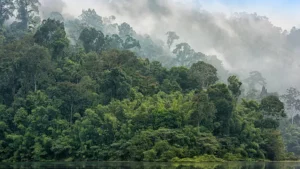
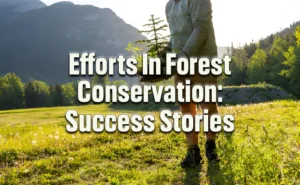
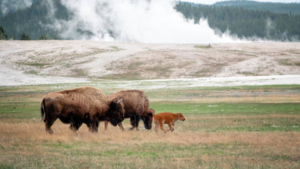
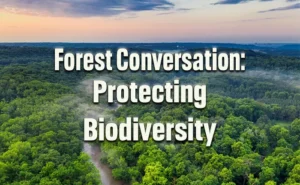

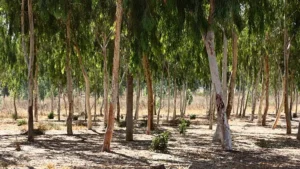

Leave your comment